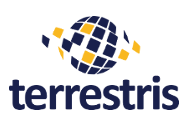terrestris – working for you everywhere!
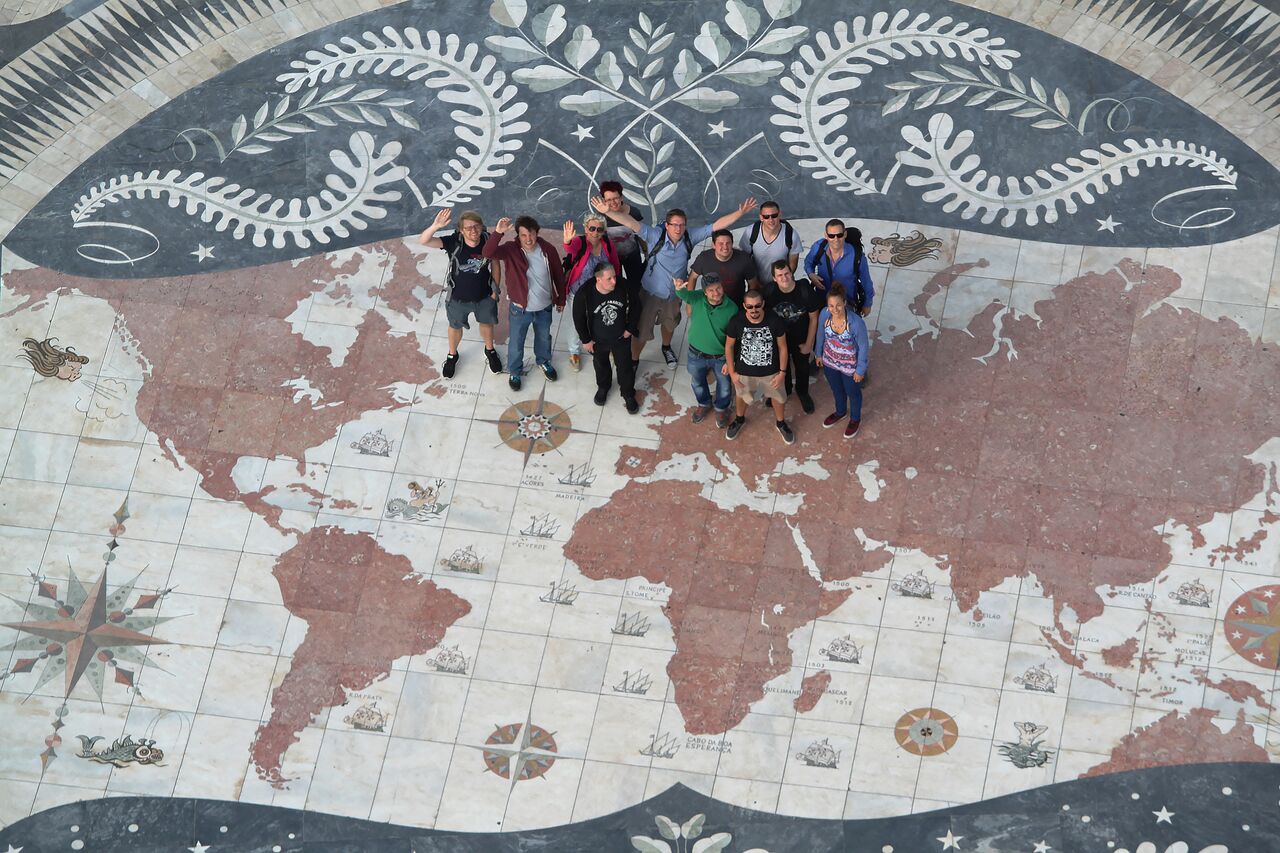
Does this sound familiar: The requirements of daily business keep you on your toes and you always just barely manage to not be overtaken by events. Because you are dealing with an interesting and rapidly developing technology, you have a variety of ideas about what you could do differently and better. Unfortunately you often lack the time to take care of these issues in a meaningful way. At this point terrestris has established a special event and currently carried out for the 3rd time a week-long retreat in combination with a codesprint. Essentially this means that all staff retires for a week to a place to pick up on the ideas that have accumulated over time and to discuss them in a pleasant atmosphere and set about implementing them immediately. In 2011 our conclave took us to Mallorca (Spain), while 2013 saw us in Croatia. This time we went to Lisbon, Portugal. At the airport in Lisbon a van was waiting that took us to the house we had rented. And there we spent a very agreeable and productive week!
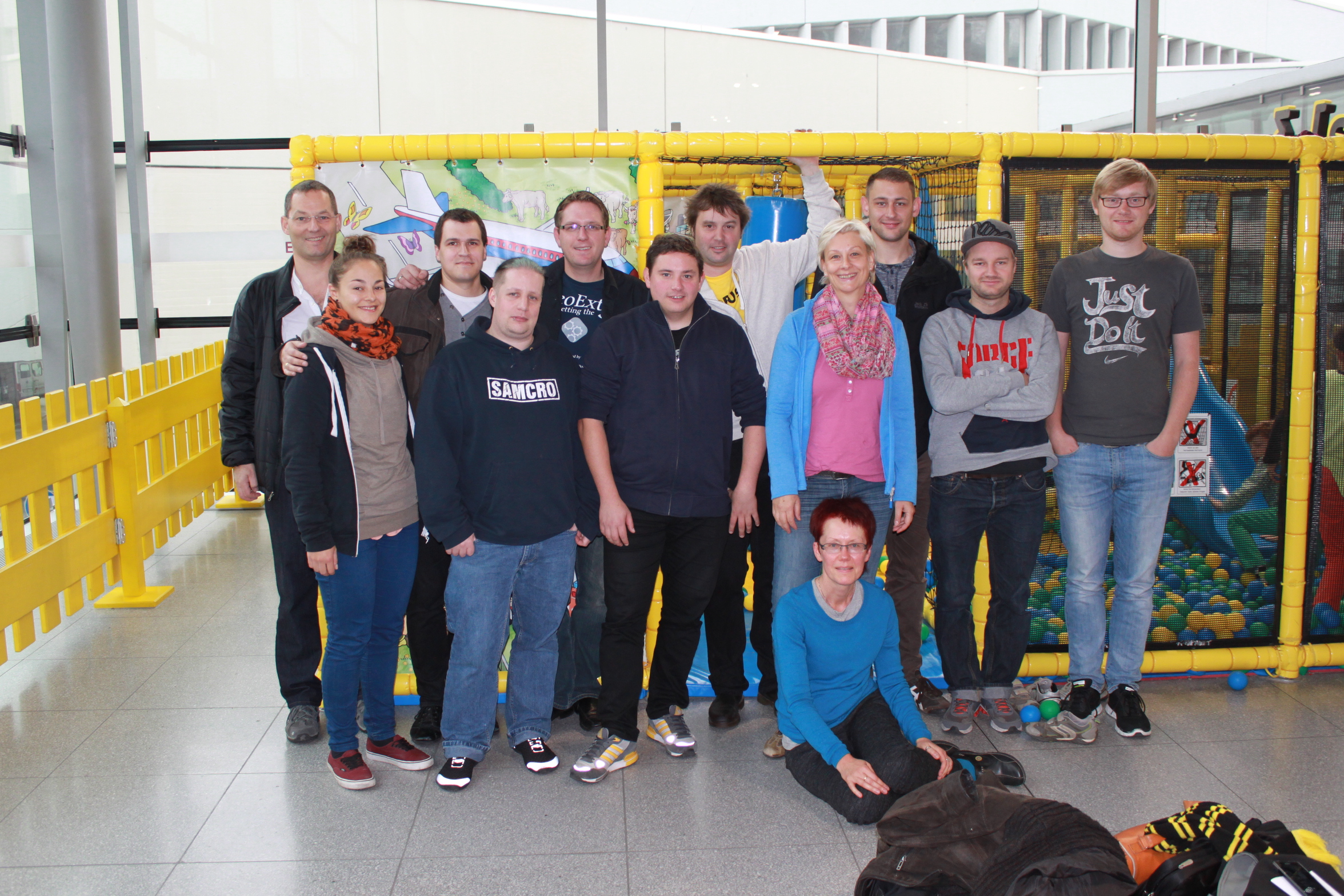
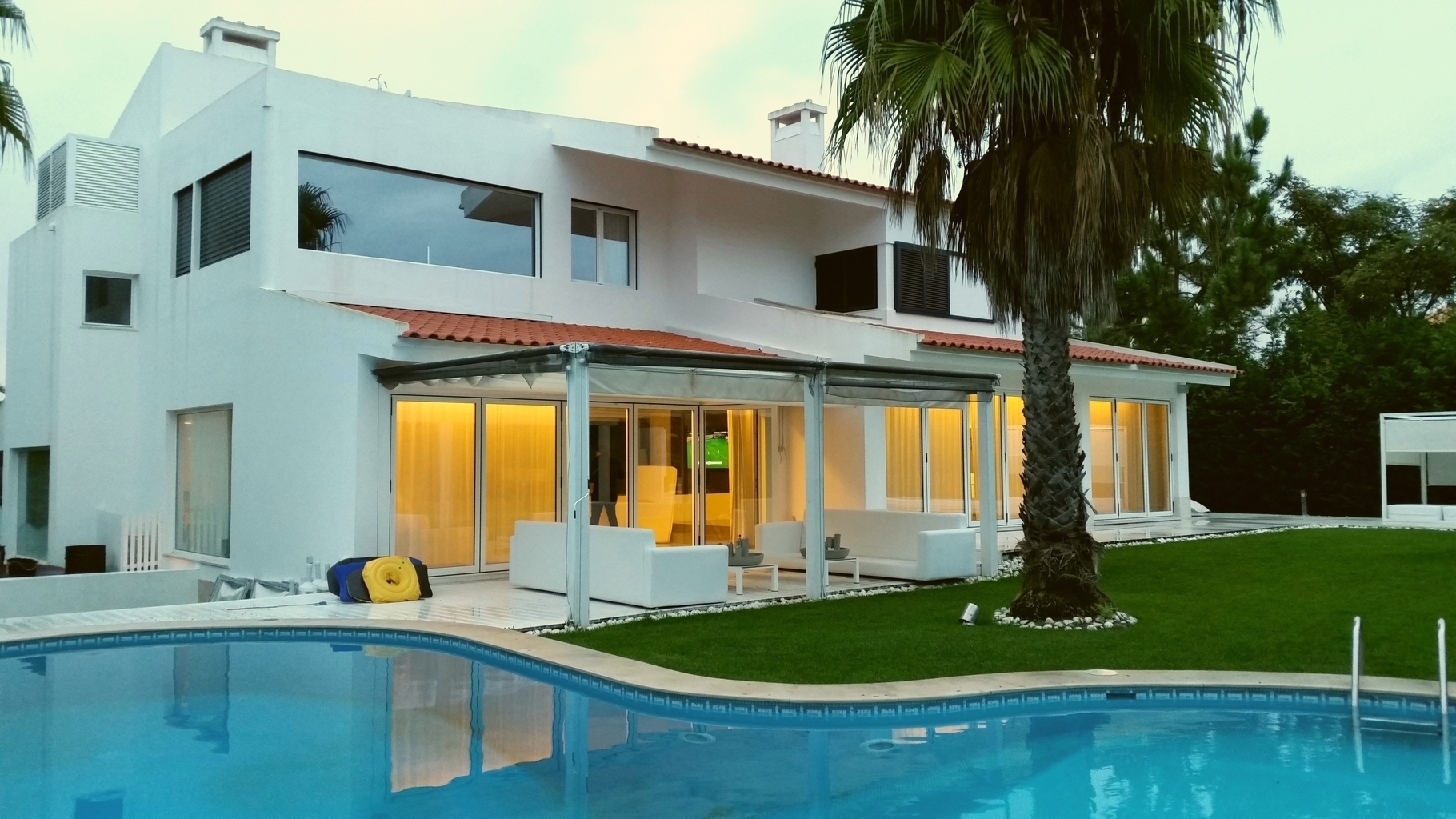
With intensive work this year’s retreat passed by very quickly. At this point we would like to briefly report on the results:
For some time now we are relying on SHOGun as a middleware for our larger SDI projects. We have used the week to expedite the new development of SHOGun (namely SHOGun2,
https://github.com/terrestris/shogun2). With the aim to enhance the good versioning and extensibility capability of SHOGun2, fundamental developments in the architecture of the system were made. During the retreat the focus was on the development of a data model. Below is a visual representation of the results:

Furthermore we implemented that SHOGun2 is compatible to Java 8 while retaining its compatibility with Java 7. In this context we switched to the Maven-Plugin JaCoCo (Test-Report/Code-Coverage). At the same time we introduced (Spring) Beans so that content generation can be easily configured.
We also worked on the SHOGun2-Client. This client is based on the JavaScript Frameworks Ext JS 6 (
https://www.sencha.com/products/extjs/#overview), OpenLayers 3 (
http://openlayers.org/), GeoExt 3 (
https://geoext.github.io/geoext3/) and BasiGX (
https://github.com/terrestris/BasiGX) and is represented as a MVVM-application (Model-View-ViewModel) that allows the visual interaction with the SHOGun2-middleware. A fundamental result of the codesprint is the development of an application-viewport that dynamically generates itself out of SHOGun2 depending on the application context. Through this the application becomes completely configurable by the user and individual layers as well as other visible components like legend or logo panel can be steered individually. The current state of the client is accessible at
https://github.com/terrestris/shogun2-client.
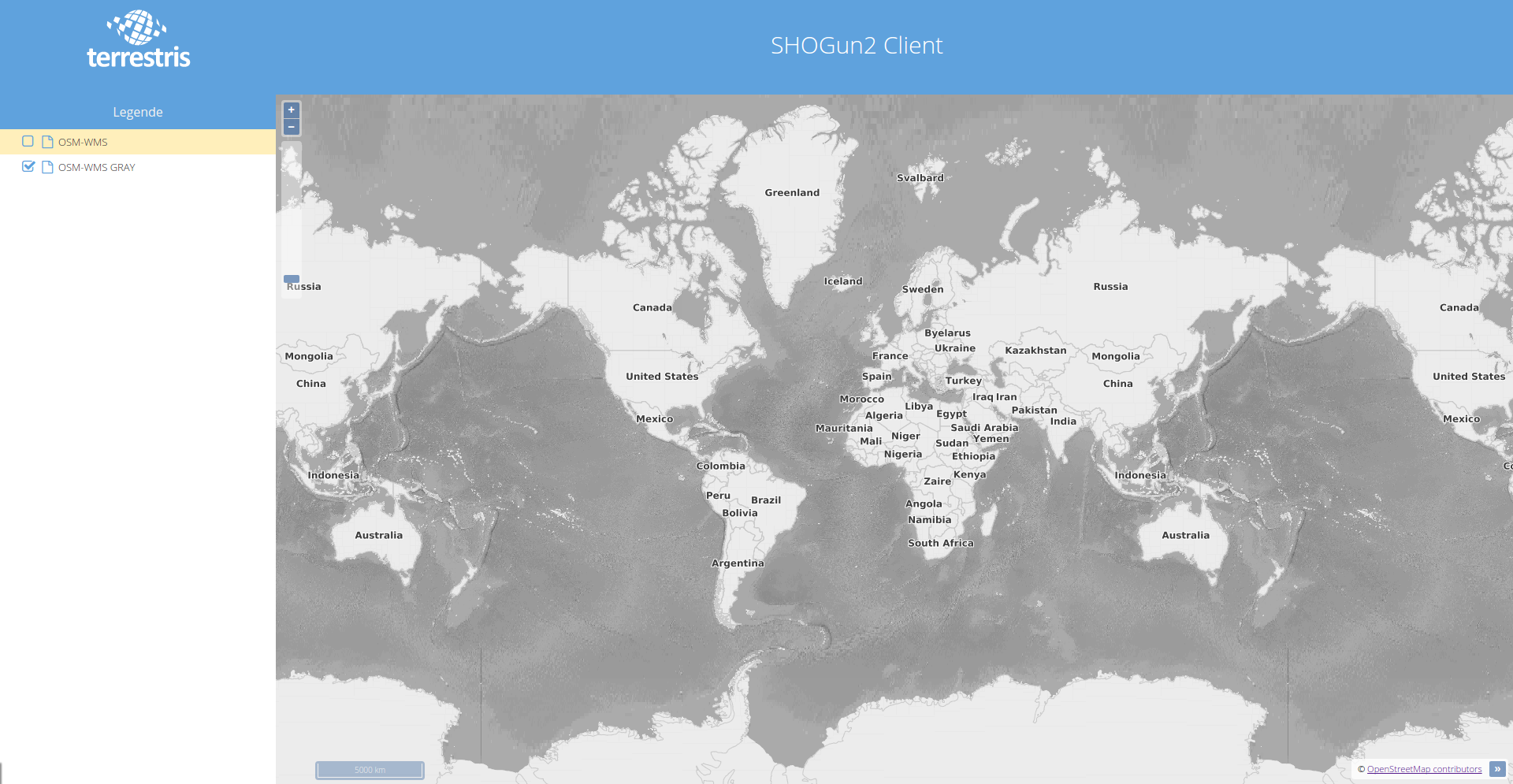
We also worked on some new layers for ows.terrestris.de. In effect these are the following 3 layers:
- worldwide topography
- OpenStreetMap overlay with road network, location information etc.
- Combination of both layers into one „Topo OSM WMS“
The layers are cached so that they are as fast as our existing OSM WMS. Impressions of the layers are displayed below.
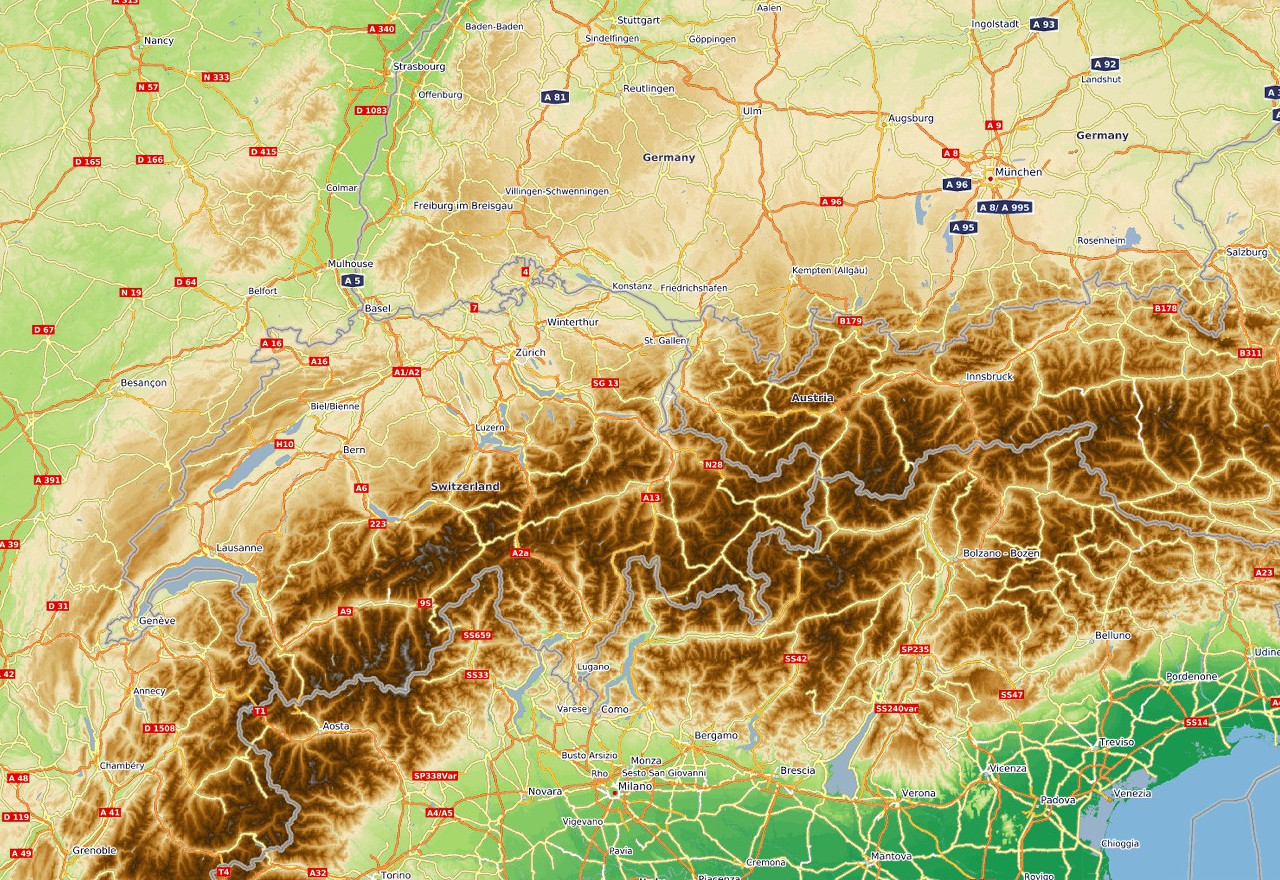
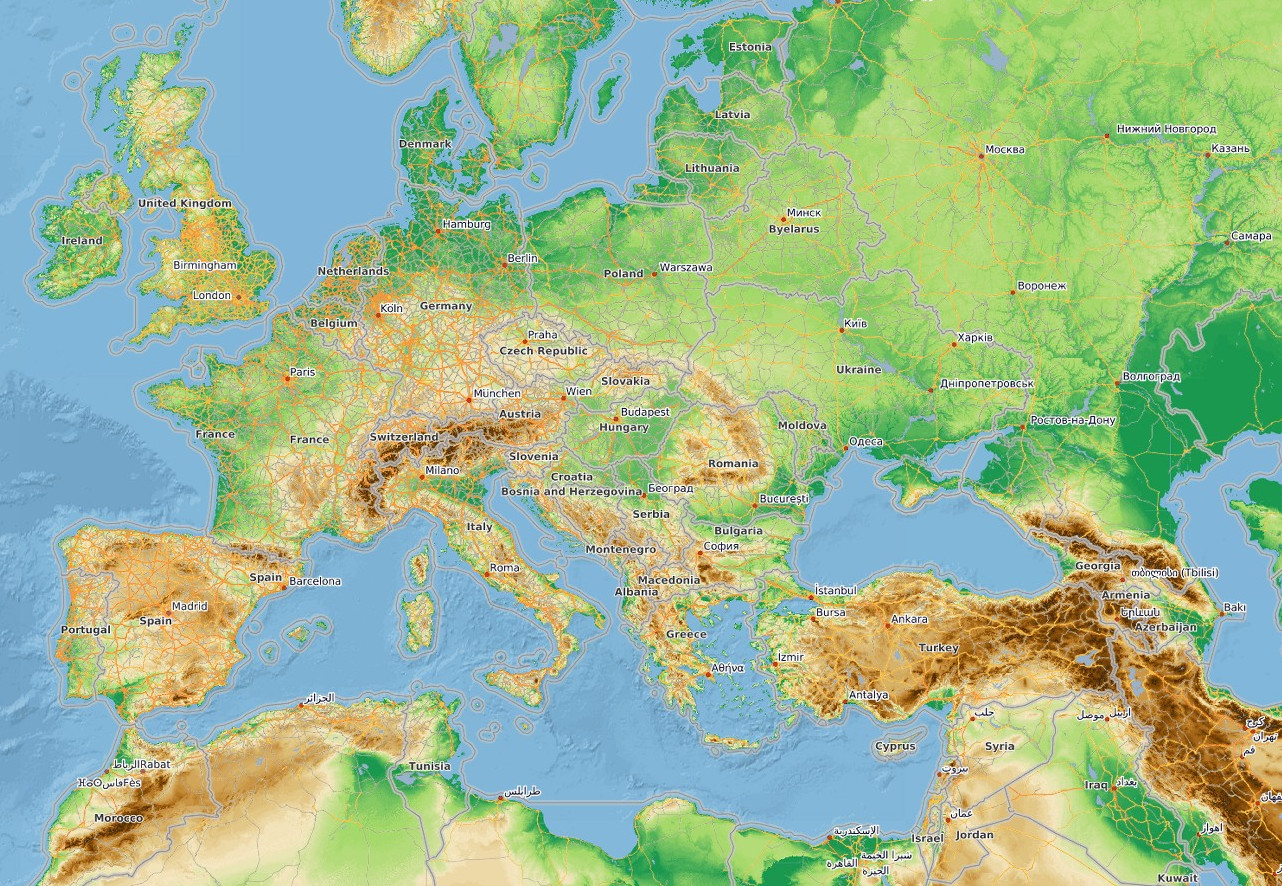
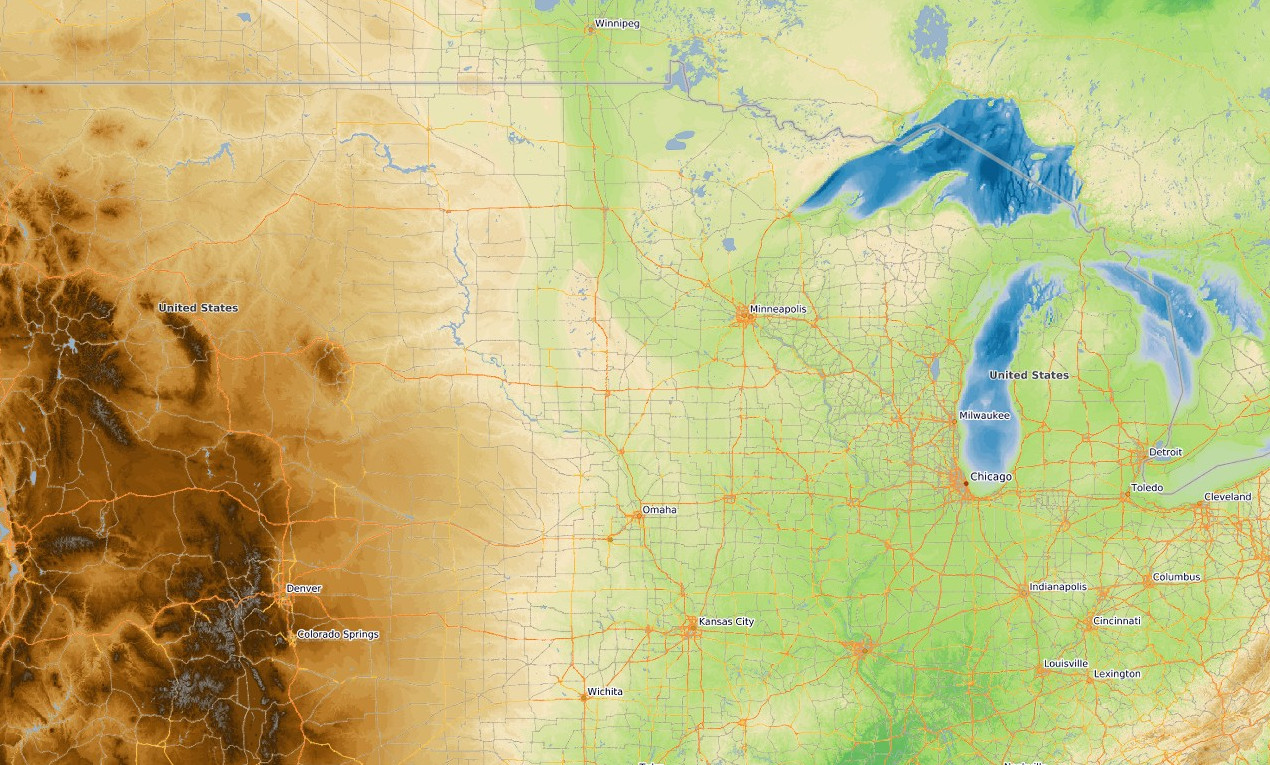
Service Worker Experiment is a new WebAPI that essentially works as a broker between the web application/website, browser and the network. Only the most modern browsers currently support this technology. As a perspective this could be a building block for offline-capable map applications that provide the majority of classic WebGIS functionality. You can find the code of the experiment at github (
https://github.com/terrestris/service-worker-experiment), and a demo application is on our homepage at
https://www.terrestris.de/service-worker/.
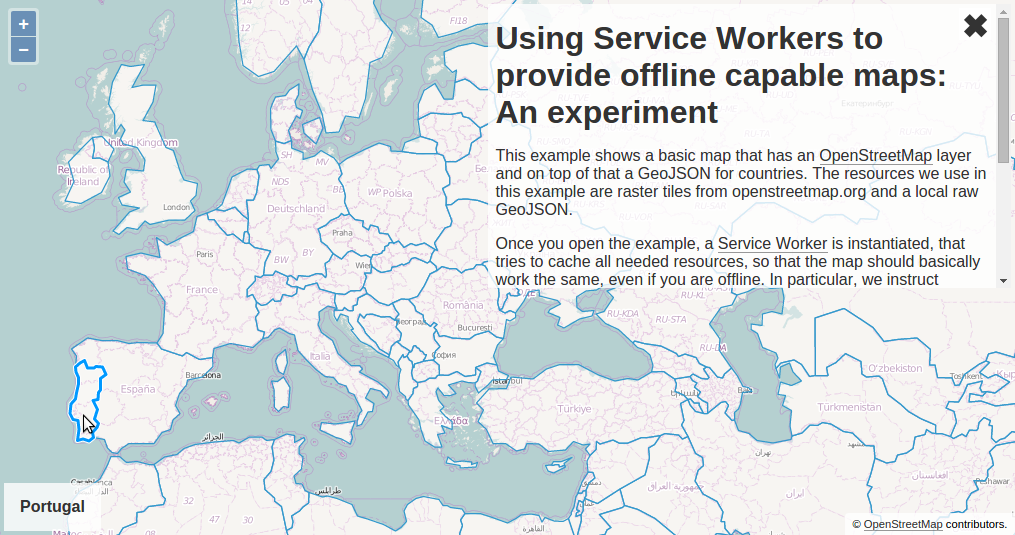
To continuously improve our processes with regard to the management of projects we discussed and optimized the technical and organizational foundations of our projects. A particular focus was on merging business management, planning and technical documents. Among other things, a new project-id was designed and we tested software for customer relationship management, attendance- and financial management. We also worked on the definition of internal management processes as well as perfecting the address block for mass mailings. Another point was the revision and the English translation of our homepage.
This time around we realised again that you can work intensively for a week and not get everything done. This is probably due to the fact that we have many ideas and more crop up along the way and that we are so enthusiastic about what we are doing that we just put too much on our plate. So, our next big retreat is sure to come although we as yet do not know where it will be held. But we wouldn’t mind if it’s as pleasant and successful as the one in Portugal.
 Does this sound familiar: The requirements of daily business keep you on your toes and you always just barely manage to not be overtaken by events. Because you are dealing with an interesting and rapidly developing technology, you have a variety of ideas about what you could do differently and better. Unfortunately you often lack the time to take care of these issues in a meaningful way. At this point terrestris has established a special event and currently carried out for the 3rd time a week-long retreat in combination with a codesprint. Essentially this means that all staff retires for a week to a place to pick up on the ideas that have accumulated over time and to discuss them in a pleasant atmosphere and set about implementing them immediately. In 2011 our conclave took us to Mallorca (Spain), while 2013 saw us in Croatia. This time we went to Lisbon, Portugal. At the airport in Lisbon a van was waiting that took us to the house we had rented. And there we spent a very agreeable and productive week!
Does this sound familiar: The requirements of daily business keep you on your toes and you always just barely manage to not be overtaken by events. Because you are dealing with an interesting and rapidly developing technology, you have a variety of ideas about what you could do differently and better. Unfortunately you often lack the time to take care of these issues in a meaningful way. At this point terrestris has established a special event and currently carried out for the 3rd time a week-long retreat in combination with a codesprint. Essentially this means that all staff retires for a week to a place to pick up on the ideas that have accumulated over time and to discuss them in a pleasant atmosphere and set about implementing them immediately. In 2011 our conclave took us to Mallorca (Spain), while 2013 saw us in Croatia. This time we went to Lisbon, Portugal. At the airport in Lisbon a van was waiting that took us to the house we had rented. And there we spent a very agreeable and productive week!

 With intensive work this year’s retreat passed by very quickly. At this point we would like to briefly report on the results:
For some time now we are relying on SHOGun as a middleware for our larger SDI projects. We have used the week to expedite the new development of SHOGun (namely SHOGun2, https://github.com/terrestris/shogun2). With the aim to enhance the good versioning and extensibility capability of SHOGun2, fundamental developments in the architecture of the system were made. During the retreat the focus was on the development of a data model. Below is a visual representation of the results:
With intensive work this year’s retreat passed by very quickly. At this point we would like to briefly report on the results:
For some time now we are relying on SHOGun as a middleware for our larger SDI projects. We have used the week to expedite the new development of SHOGun (namely SHOGun2, https://github.com/terrestris/shogun2). With the aim to enhance the good versioning and extensibility capability of SHOGun2, fundamental developments in the architecture of the system were made. During the retreat the focus was on the development of a data model. Below is a visual representation of the results:
 Furthermore we implemented that SHOGun2 is compatible to Java 8 while retaining its compatibility with Java 7. In this context we switched to the Maven-Plugin JaCoCo (Test-Report/Code-Coverage). At the same time we introduced (Spring) Beans so that content generation can be easily configured.
We also worked on the SHOGun2-Client. This client is based on the JavaScript Frameworks Ext JS 6 (https://www.sencha.com/products/extjs/#overview), OpenLayers 3 (http://openlayers.org/), GeoExt 3 (https://geoext.github.io/geoext3/) and BasiGX (https://github.com/terrestris/BasiGX) and is represented as a MVVM-application (Model-View-ViewModel) that allows the visual interaction with the SHOGun2-middleware. A fundamental result of the codesprint is the development of an application-viewport that dynamically generates itself out of SHOGun2 depending on the application context. Through this the application becomes completely configurable by the user and individual layers as well as other visible components like legend or logo panel can be steered individually. The current state of the client is accessible at https://github.com/terrestris/shogun2-client.
Furthermore we implemented that SHOGun2 is compatible to Java 8 while retaining its compatibility with Java 7. In this context we switched to the Maven-Plugin JaCoCo (Test-Report/Code-Coverage). At the same time we introduced (Spring) Beans so that content generation can be easily configured.
We also worked on the SHOGun2-Client. This client is based on the JavaScript Frameworks Ext JS 6 (https://www.sencha.com/products/extjs/#overview), OpenLayers 3 (http://openlayers.org/), GeoExt 3 (https://geoext.github.io/geoext3/) and BasiGX (https://github.com/terrestris/BasiGX) and is represented as a MVVM-application (Model-View-ViewModel) that allows the visual interaction with the SHOGun2-middleware. A fundamental result of the codesprint is the development of an application-viewport that dynamically generates itself out of SHOGun2 depending on the application context. Through this the application becomes completely configurable by the user and individual layers as well as other visible components like legend or logo panel can be steered individually. The current state of the client is accessible at https://github.com/terrestris/shogun2-client.
 We also worked on some new layers for ows.terrestris.de. In effect these are the following 3 layers:
We also worked on some new layers for ows.terrestris.de. In effect these are the following 3 layers:


 Service Worker Experiment is a new WebAPI that essentially works as a broker between the web application/website, browser and the network. Only the most modern browsers currently support this technology. As a perspective this could be a building block for offline-capable map applications that provide the majority of classic WebGIS functionality. You can find the code of the experiment at github (https://github.com/terrestris/service-worker-experiment), and a demo application is on our homepage at https://www.terrestris.de/service-worker/.
Service Worker Experiment is a new WebAPI that essentially works as a broker between the web application/website, browser and the network. Only the most modern browsers currently support this technology. As a perspective this could be a building block for offline-capable map applications that provide the majority of classic WebGIS functionality. You can find the code of the experiment at github (https://github.com/terrestris/service-worker-experiment), and a demo application is on our homepage at https://www.terrestris.de/service-worker/.
 To continuously improve our processes with regard to the management of projects we discussed and optimized the technical and organizational foundations of our projects. A particular focus was on merging business management, planning and technical documents. Among other things, a new project-id was designed and we tested software for customer relationship management, attendance- and financial management. We also worked on the definition of internal management processes as well as perfecting the address block for mass mailings. Another point was the revision and the English translation of our homepage.
This time around we realised again that you can work intensively for a week and not get everything done. This is probably due to the fact that we have many ideas and more crop up along the way and that we are so enthusiastic about what we are doing that we just put too much on our plate. So, our next big retreat is sure to come although we as yet do not know where it will be held. But we wouldn’t mind if it’s as pleasant and successful as the one in Portugal.
To continuously improve our processes with regard to the management of projects we discussed and optimized the technical and organizational foundations of our projects. A particular focus was on merging business management, planning and technical documents. Among other things, a new project-id was designed and we tested software for customer relationship management, attendance- and financial management. We also worked on the definition of internal management processes as well as perfecting the address block for mass mailings. Another point was the revision and the English translation of our homepage.
This time around we realised again that you can work intensively for a week and not get everything done. This is probably due to the fact that we have many ideas and more crop up along the way and that we are so enthusiastic about what we are doing that we just put too much on our plate. So, our next big retreat is sure to come although we as yet do not know where it will be held. But we wouldn’t mind if it’s as pleasant and successful as the one in Portugal.
